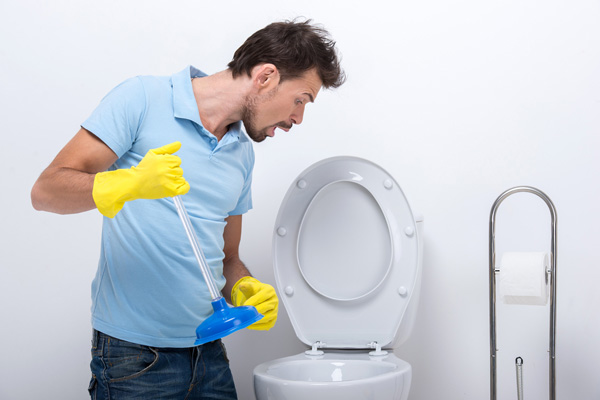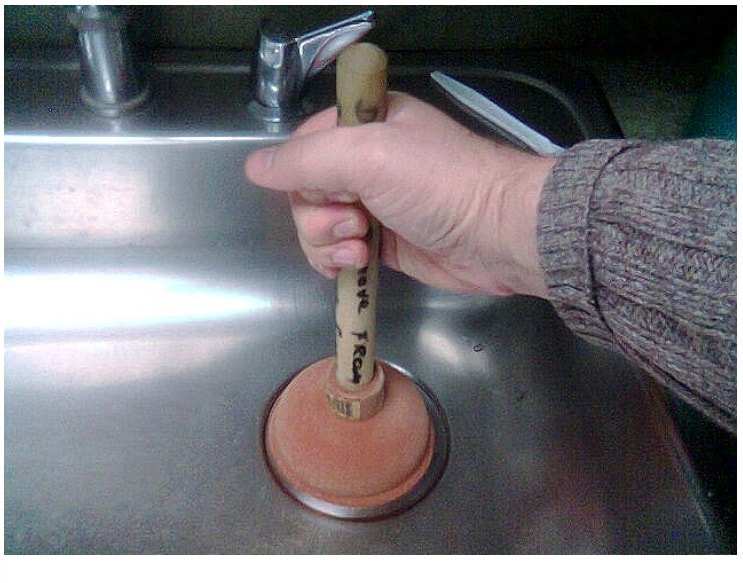Discover Plungers and Drain Cleaners Methods: Professional Advice
Discover Plungers and Drain Cleaners Methods: Professional Advice
Blog Article
What're your thoughts concerning Here's How to Correctly Use a Toilet Plunger?

Intro
Correct upkeep of family drains is essential for avoiding blockages and guaranteeing smooth water circulation. One of the trick tools in every homeowner's toolkit is the plunger, together with different drainpipe cleaners made to deal with stubborn clogs effectively. This short article discovers just how to make use of bettors and drainpipe cleansers properly to keep your drains flowing freely.
Section 1: Understanding Bettors
Types of Plungers
There are numerous kinds of plungers offered, each created for different types of drains and clogs. One of the most usual types consist of mug bettors, flange bettors, and accordion bettors.
Just How Plungers Job
Bettors work with the concept of producing pressure and suction to remove clogs. When properly used over a drainpipe, they develop a vacuum cleaner that can pull out debris or break up clogs.
Choosing the Right Plunger
Selecting the ideal bettor depends upon the sort of drain and the nature of the obstruction. Mug bettors are perfect for sinks and bathtubs, while flange plungers are much better suited for bathrooms due to their style.
Common Mistakes with Plungers
Staying clear of these mistakes makes sure effective plunging: inappropriate seal around the drainpipe, not enough force, and unclear bordering particles.
Area 2: Making Use Of Plungers Properly
Prep work
Before diving, guarantee the plunger covers the drain entirely and develops a limited seal. Clear any kind of visible particles around the drainpipe opening.
Method
Beginning with mild diving activities to construct suction. Increase stress gradually, making use of a constant rhythm. Repeat as essential till the drainpipe gets rid of.
Repairing Tips
If plunging doesn't work, try adjusting the seal, applying oil jelly for a better seal, or using a various type of bettor.
Area 3: Comprehending Drain Cleaners
Sorts Of Drain Cleansers
Drain cleaners can be chemical or enzymatic. Chemical cleansers make use of solid chemicals to dissolve clogs, while chemical cleansers utilize all-natural enzymes to break down organic matter.
How Drain Cleansers Work
Chemical cleansers react with blockages to dissolve them, while chemical cleansers break down natural materials like hair and oil without hurting pipes.
Security Factors to consider
Always put on handwear covers and eye security when utilizing chemical drainpipe cleaners. Make certain sufficient air flow and follow supplier instructions carefully.
Eco-Friendly Alternatives
Think about utilizing vinegar and cooking soft drink or enzyme-based cleansers for green options that are more secure for pipelines and the setting.
Area 4: Making Use Of Drainpipe Cleansers Effectively
Application Techniques
Pour chemical cleaners straight into the drain opening. Permit them to work for the recommended time prior to flushing with warm water. Enzymatic cleaners should sit overnight.
Preventative measures
Avoid blending various types of cleansers, as this can generate toxic fumes. Never use chemical cleansers along with a bettor, as spilling can take place.
Managing Stubborn Clogs
For relentless clogs, think about using a pipes serpent or calling a specialist plumber to stop damages to pipelines.
Conclusion
In conclusion, understanding how to utilize plungers and drain cleansers efficiently is necessary for preserving healthy plumbing systems. By selecting the right tools and methods, property owners can deal with minor obstructions and prevent significant pipes concerns down the line.
How To Properly Use A Plumbing Snake To Clear Drains
When any drain clogs in our home arise, we tend to gravitate toward the plunger and little else. In cases where the plunger and its vacuum-created pressure are not able to clear clogs, many immediately move to harmful chemicals or simply call their plumber to fix the issue.
we’re happy to help with all drain cleaning needs and concerns. This includes informing you on a few other home remedies you may have at your disposal for minor to moderate clogs, one of which is the use of a plumbing snake. Many people have never used one of these before – let’s go over the steps to take when your drain clogs and you have a plumbing snake available.
Attempt Plunger Use
The first step here, as we noted above, should indeed be to grab your plunger when you notice a drain clog and attempt to resolve it this way. If you’re unsure how to use a particular type of plunger, our plumbers can answer any questions you have. If this doesn’t do the trick, however, you move on to the snake.
Locate And Prepare Snake
A plumbing snake is a metal or plastic device that’s generally about a quarter of an inch thick. It’s design with significant extensions, meant to reach down into your clogged drain and push the clog out. Snakes also contain drain augers that will latch onto and push stubborn blockages.
If your plunger doesn’t clear a clog, locate your snake and bring it to the drain in question. We also recommend keeping a bucket nearby to collect the clog once you pull it out, plus we’d advise wearing goggles and possibly protective gloves.
Feed Snake
Once you’re ready to go, feed the snake slowly down the drain, using the crank device it comes with to keep it moving until it finds the clog. Once this happens, much of the clog will be latched onto the coil so you can pull it out, while the rest will simply break up and flow downward.
Detach Debris
Remove the snake slowly from the drain, and once you’ve done so, pick off any debris that’s stuck to the coil. This is another area where wearing gloves is a must.
Flush Drain
Finally, take a few minutes to ensure the snake has done its job correctly. If you’ve been using it on a toilet, flush the toilet a couple times and make sure everything flows well. If you’ve used it on a different drain, flush it with some room temperature water.
https://www.mybuddytheplumber.com/blog/how-to-properly-use-a-plumbing-snake-to-clear-drains/

Application Techniques
Pour chemical cleaners straight into the drain opening. Permit them to work for the recommended time prior to flushing with warm water. Enzymatic cleaners should sit overnight.
Preventative measures
Avoid blending various types of cleansers, as this can generate toxic fumes. Never use chemical cleansers along with a bettor, as spilling can take place.
Managing Stubborn Clogs
For relentless clogs, think about using a pipes serpent or calling a specialist plumber to stop damages to pipelines.
Conclusion
In conclusion, understanding how to utilize plungers and drain cleansers efficiently is necessary for preserving healthy plumbing systems. By selecting the right tools and methods, property owners can deal with minor obstructions and prevent significant pipes concerns down the line.
How To Properly Use A Plumbing Snake To Clear Drains
When any drain clogs in our home arise, we tend to gravitate toward the plunger and little else. In cases where the plunger and its vacuum-created pressure are not able to clear clogs, many immediately move to harmful chemicals or simply call their plumber to fix the issue.
we’re happy to help with all drain cleaning needs and concerns. This includes informing you on a few other home remedies you may have at your disposal for minor to moderate clogs, one of which is the use of a plumbing snake. Many people have never used one of these before – let’s go over the steps to take when your drain clogs and you have a plumbing snake available.
Attempt Plunger Use
The first step here, as we noted above, should indeed be to grab your plunger when you notice a drain clog and attempt to resolve it this way. If you’re unsure how to use a particular type of plunger, our plumbers can answer any questions you have. If this doesn’t do the trick, however, you move on to the snake.
Locate And Prepare Snake
A plumbing snake is a metal or plastic device that’s generally about a quarter of an inch thick. It’s design with significant extensions, meant to reach down into your clogged drain and push the clog out. Snakes also contain drain augers that will latch onto and push stubborn blockages.
If your plunger doesn’t clear a clog, locate your snake and bring it to the drain in question. We also recommend keeping a bucket nearby to collect the clog once you pull it out, plus we’d advise wearing goggles and possibly protective gloves.
Feed Snake
Once you’re ready to go, feed the snake slowly down the drain, using the crank device it comes with to keep it moving until it finds the clog. Once this happens, much of the clog will be latched onto the coil so you can pull it out, while the rest will simply break up and flow downward.
Detach Debris
Remove the snake slowly from the drain, and once you’ve done so, pick off any debris that’s stuck to the coil. This is another area where wearing gloves is a must.
Flush Drain
Finally, take a few minutes to ensure the snake has done its job correctly. If you’ve been using it on a toilet, flush the toilet a couple times and make sure everything flows well. If you’ve used it on a different drain, flush it with some room temperature water.
https://www.mybuddytheplumber.com/blog/how-to-properly-use-a-plumbing-snake-to-clear-drains/

I'm certainly very intrigued by How to Unclog Your Sink with a Plunger and I am assuming you enjoyed reading the new entry. Sharing is nice. Helping others is fun. We appreciate reading our article about Tips on How to Effectively Use a Plunger.
This Resource Report this page